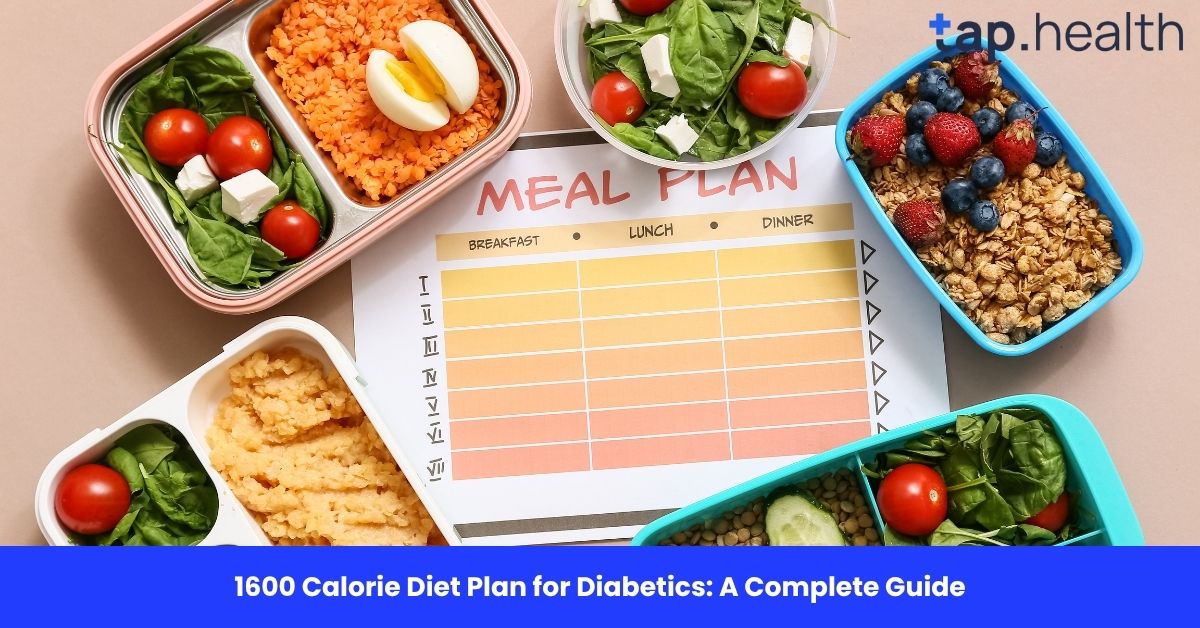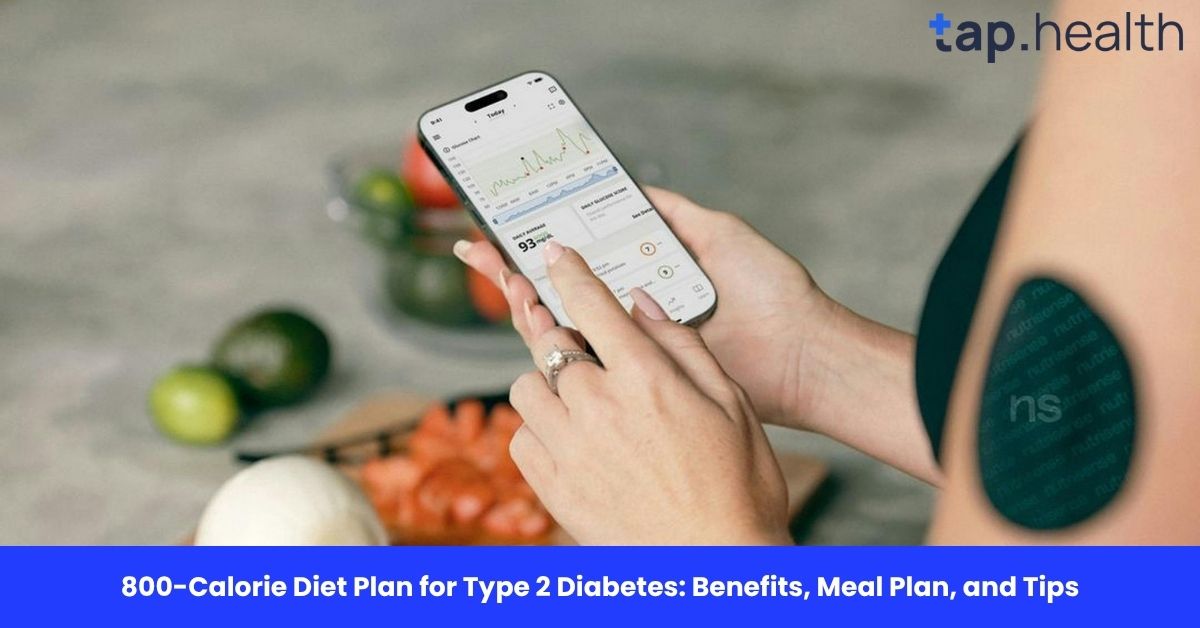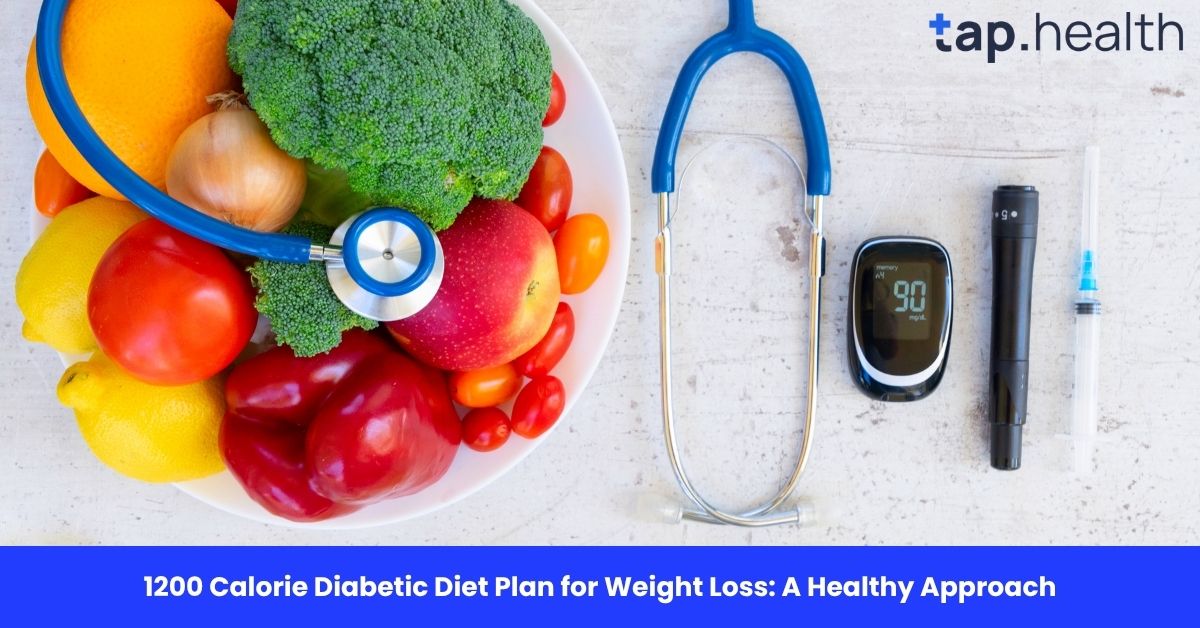Managing diabetes through diet is one of the most effective ways to control blood sugar levels and improve overall health. A well-planned meal that limits calorie intake while maintaining balanced nutrients is crucial for managing diabetes. This 1600-calorie diet plan for diabetics focuses on whole foods that promote stable blood sugar levels and a healthy lifestyle.
In this guide, we’ll explore the essentials of a 1600-calorie diabetic diet, meal planning strategies, and provide a detailed sample meal plan that can be followed for optimal health.
What is a 1600 Calorie Diet for Diabetics?
A 1600 calorie diet for diabetics is designed to provide just the right amount of energy for individuals with diabetes, balancing their daily nutritional needs while helping maintain stable blood glucose levels. This diet is often recommended for weight management and blood sugar control, especially for those with Type 2 diabetes.
The Key Principles:
- Control carbohydrate intake: Carbs have the biggest impact on blood sugar levels. Diabetic diets often focus on low-GI (glycemic index) foods and portion-controlled meals.
- Balance macronutrients: A typical 1600-calorie diet for diabetics includes a good balance of carbohydrates, proteins, and fats. About 45-55% of the calories should come from carbs, 15-20% from proteins, and 25-30% from fats.
- Fibre-rich foods: High-fibre foods, like vegetables, fruits, legumes, and whole grains, help manage blood sugar levels.
Benefits of a 1600 Calorie Diet Plan for Diabetics
1. Blood Sugar Control
By focusing on complex carbs and reducing refined sugars, the diet helps prevent blood sugar spikes. It ensures that insulin and glucose are properly managed in the body.
2. Weight Management
Maintaining a healthy weight is essential for people with Type 2 diabetes. A 1600-calorie diet helps control caloric intake, promoting gradual weight loss or maintenance.
3. Improved Heart Health
A diet low in unhealthy fats and high in fibre promotes cardiovascular health, which is especially important for diabetics who are at higher risk of heart disease.
4. Reduced Risk of Complications
Controlling blood sugar through diet lowers the risk of complications such as nerve damage, kidney disease, and eye problems, which are common in diabetics.
What to Include in a 1600 Calorie Diabetic Meal Plan
When planning meals, it’s essential to choose foods that are diabetic-friendly, nutrient-dense, and low in refined sugars. Here’s what your daily meals might look like:
1. Non-Starchy Vegetables:
These should fill half of your plate. Examples include spinach, broccoli, cucumbers, tomatoes, and carrots.
2. Lean Proteins:
Protein helps with muscle maintenance and provides satiety. Opt for lean proteins such as chicken, fish, tofu, eggs, or legumes.
3. Whole Grains:
Choose complex carbs like whole wheat, brown rice, quinoa, and oats that are rich in fibre and help manage blood sugar levels.
4. Healthy Fats:
Incorporate healthy fats from sources like nuts, seeds, avocado, and olive oil. These fats support heart health.
5. Fruits:
In moderation, fruits like berries, apples, and pears are excellent sources of fibre and antioxidants.
Sample 1600 Calorie Diabetic Meal Plan
Here’s an example of a 1600-calorie diet plan suitable for diabetics. This plan is nutrient-rich and helps control blood sugar levels while providing the energy needed for daily activities.
Breakfast (Approx. 500 calories):
- 1 cup oatmeal made with water or low-fat milk
- 1 tablespoon ground flaxseeds
- 12 almonds or 1 tablespoon peanut butter
- 1 banana or an apple
Why this works: Oats are a great source of soluble fibre, which helps manage blood sugar. Almonds and flaxseeds provide healthy fats and fibre, keeping you full longer.
Mid-Morning Snack (Approx. 100 calories):
- 1 small apple or pear
- 1 tablespoon almond butter or a boiled egg
Why this works: A small fruit provides fibre and vitamins, while the almond butter or boiled egg provides protein and healthy fats, helping stabilize blood sugar.
Lunch (Approx. 500 calories):
- 2 cups of mixed salad greens (spinach, lettuce, cucumber, tomato)
- 3 ounces of grilled chicken or tofu
- 1 tablespoon olive oil and balsamic vinegar dressing
- 1 whole wheat pita bread
Why this works: This meal is full of non-starchy vegetables and lean protein, with healthy fats from olive oil, helping you feel satisfied and keeping blood sugar levels stable.
Afternoon Snack (Approx. 100 calories):
- 1 small handful of mixed nuts or 1 small bowl of Greek yogurt
Why this works: Greek yogurt is high in protein, which helps control appetite and blood sugar levels, while nuts provide healthy fats and fibre.
Dinner (Approx. 400 calories):
- 1 cup of stir-fried mixed vegetables (broccoli, bell peppers, zucchini) cooked with olive oil
- ½ cup brown rice or quinoa
- 3 ounces of grilled salmon or tofu
Why this works: The combination of vegetables and lean protein helps stabilize blood sugar, and brown rice or quinoa provides complex carbs for sustained energy.
Tips for Sticking to a 1600 Calorie Diabetic Diet
- Plan Your Meals: Meal prepping ensures you have access to healthy, diabetic-friendly foods, making it easier to stay on track with your calorie and nutrition goals.
- Monitor Your Blood Sugar: Regularly checking your blood sugar levels can help you understand how different foods affect your glucose levels.
- Stay Hydrated: Drink plenty of water throughout the day to stay hydrated and help with digestion.
- Avoid Refined Sugars: Stay away from sugary snacks, sodas, and processed foods that can cause blood sugar spikes.
- Exercise Regularly: Regular physical activity can help improve insulin sensitivity and manage weight.
Key Takeaways
A 1600-calorie diet for diabetics is designed to help manage blood sugar levels while supporting weight loss and overall health. It focuses on whole foods, lean proteins, healthy fats, and complex carbohydrates. By planning meals carefully, choosing nutrient-dense foods, and incorporating healthy habits like regular exercise, you can improve your diabetes management and quality of life.
FAQs ON 1600 Calorie Diet Plan for Diabetics
What foods are best for a 1600-calorie diabetic diet?
A balanced 1600-calorie diabetic diet includes non-starchy vegetables, lean proteins like chicken or tofu, whole grains like quinoa and brown rice, and healthy fats from sources like avocado and nuts.
Can a 1600-calorie diet help in weight loss for diabetics?
Yes, a 1600-calorie diet can help in gradual weight loss for diabetics. By limiting calorie intake and focusing on nutrient-dense foods, it promotes healthy weight management while controlling blood sugar.
How many carbs should be included in a 1600-calorie diet for diabetics?
About 45-55% of your daily calories should come from carbohydrates. Focus on complex carbs such as whole grains, vegetables, and legumes to manage blood sugar levels.
Is a 1600-calorie diet safe for people with Type 1 diabetes?
Yes, a 1600-calorie diet can be tailored for Type 1 diabetics as well, but it’s important to work with a healthcare provider or dietitian to adjust insulin and carbohydrate ratios.
Can I eat fruits on a 1600-calorie diabetic diet?
Yes, fruits like berries, apples, and pears can be included in moderation. These fruits are rich in fibre and antioxidants, which help in blood sugar management.
What are the best snacks for a 1600-calorie diabetic diet?
Healthy snacks include a small handful of nuts, boiled eggs, Greek yogurt, or fruits like apples or berries. These options provide balanced nutrition without causing blood sugar spikes.
How does a 1600-calorie diet help manage diabetes?
A 1600-calorie diet helps stabilize blood sugar by focusing on nutrient-dense, low-GI foods and controlling portion sizes. It also supports weight loss, which improves insulin sensitivity.



